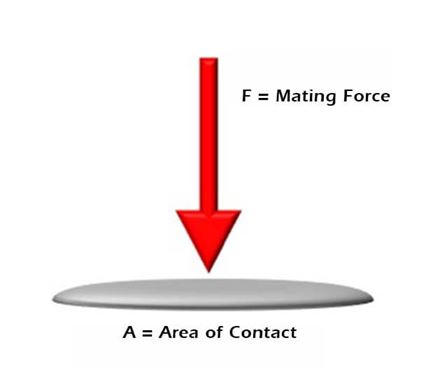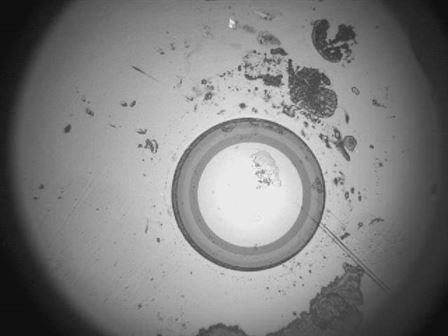Cleaning Both Ends of a Fiber Connection — Do I Really Have To?
We often get this question. “What happens, if there are dust particles on one of the connector end faces during the connector mating process? Can I save some time and just clean one side?”
The short answer is, NO, you’re not going to save any time because the odds are you’ll be back next week to repair the end-faces. Mating connectors with dust on the end-faces will embed the debris into the end-face, causing permanent scratches and pits. Reterminating may be required.
At a microscopic level, the two end-faces are pressed together with incredible force. The way to calculate contact pressure (P) is to divide the force by the surface area or simply P=F/A. If we assume the spring in a connector is operating to industry standards, it has mating force of 3kg (6.6 lbs). The contact area of the two mated connectors is 200 square microns (0.00787 square inches). This means the contact force between of the mated pair in the contact zone is 147N/m2 (21 psi). This is more than enough pressure to embed the dust particles deep into the ferrule end-faces, creating scratches and pit marks.
These defects will not only be in the glass of the fibre but also on the surfaces of the zirconia ceramic of a single fiber ferrule and in the polymer composite materials used for MT ferrules. Scratches and pits located in the contact zone will have a negative impact of the signal performance — spiking the inspection losses and disrupting back reflectance, especially for angle-polished connectors.
So here’s the rule: clean both end-faces, every time you mate them.


This end-face is contaminated with particulate and probably skin cells
